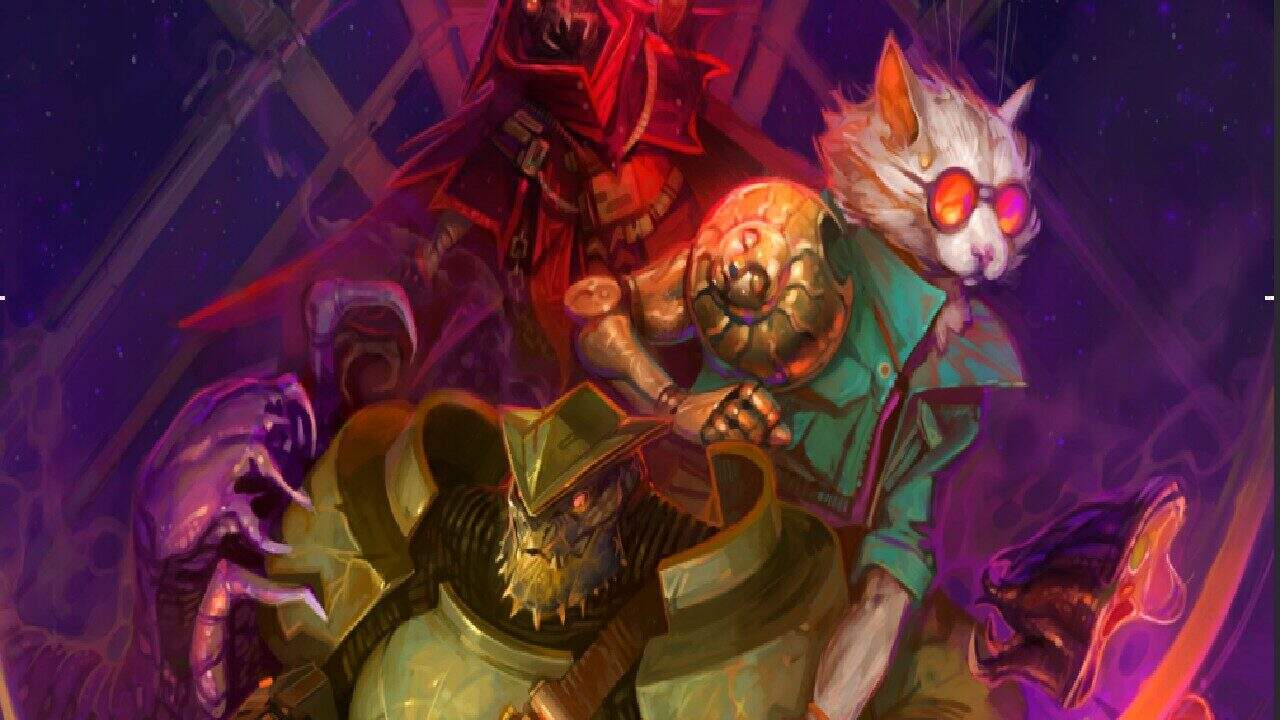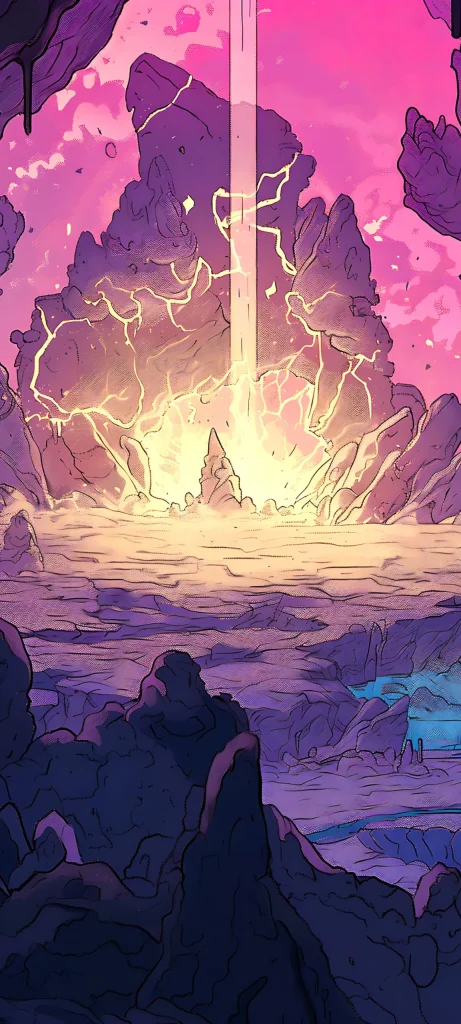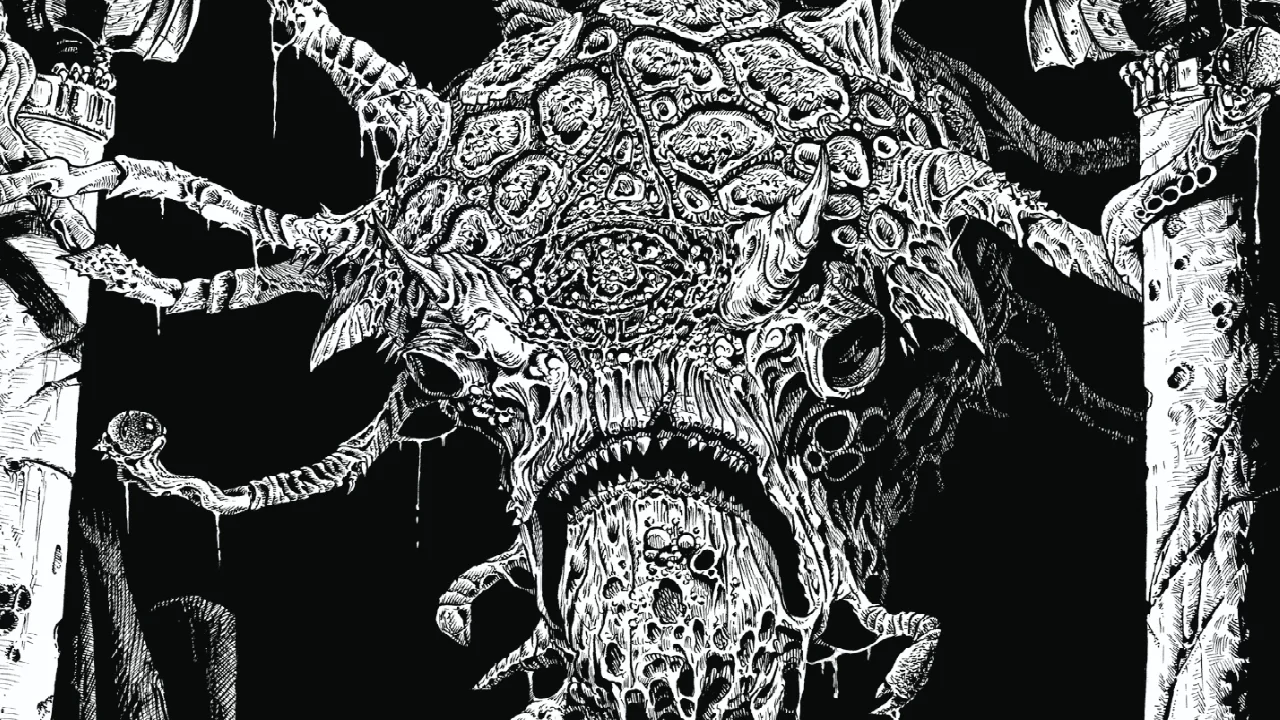
Many people call Kelsey Dionne’s Shadowdark a game of old school ideas mixed with modern design. This doesn’t do the game justice. Playing Shadowdark, its influences are easy to see, but there’s real innovation and brilliance here, too. These aren’t just fancy ideals; they offer consistent opportunities for moments other systems can struggle to offer. Shadowdark mightn’t be for everyone, but it’s worth every group’s time to experience what it does so differently, so well.
The Atmosphere Playing Shadowdark
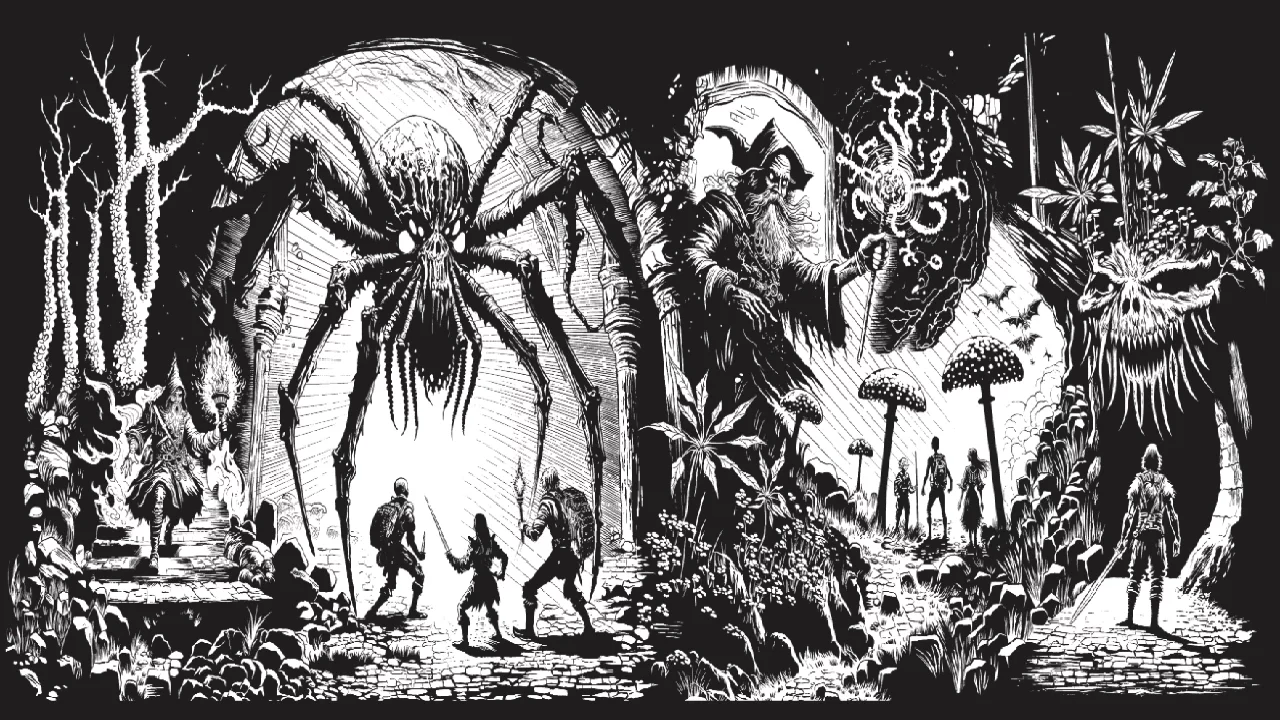
Shadowdark’s atmosphere immediately stands out from other games in the tabletop role-playing space. The art is simply gorgeous. It’s bold; it’s gritty. The rough, hand-drawn pieces communicate exactly what the game is about. Characters are survivors, not heroes; the party are prey more often than predator. Show the front cover of the rulebook, or the gamemaster’s (GM) screen—see the artwork immediately above, and players have an instant feel for the game.
Incredible upload speed is a feature of the entire system; the layout mirrors the art. Rules never go over the page; paragraphs are never more than seven lines, are evenly spaced, and have no widow words. Though these may seem small things, they prioritise comfort and speed reading. Kelsey’s tone is friendly, but blunt; it feels like everything that wasn’t necessary got cut out. She has designed material that maximises easy referencing, so there’s more time spent role-playing than rule-checking.
Shadowdark has this laser-focus on every detail. It wants to give a great framework for dungeon exploring, while being as easy to play and run as possible.
The Player Side of Playing Shadowdark
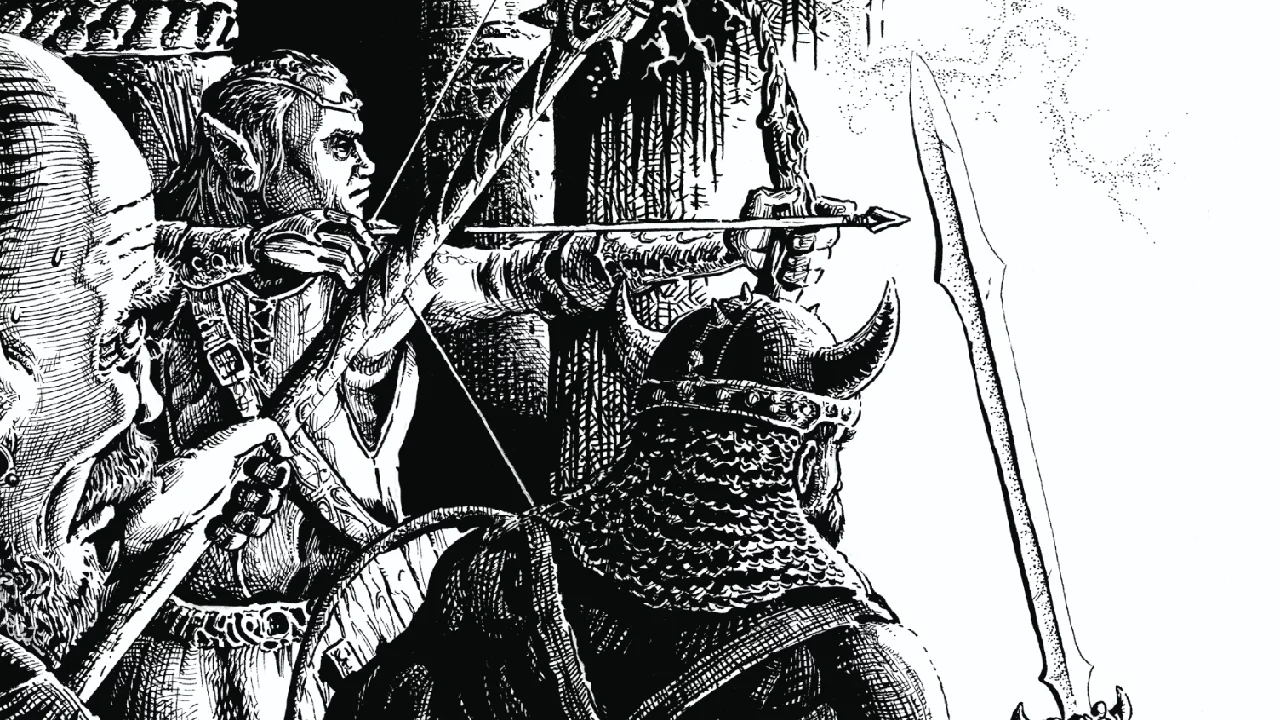
On the surface, Shadowdark looks like a standard d20 system. Characters have the usual six stats—Strength, Dexterity, Constitution, Intelligence, Wisdom, and Charisma. They have Hit Points (HP) and Armor Class (AC). Players will roll a d20 for checks against a Difficulty Class (DC) chosen by the GM. They’ll also need a d4, d6, d8, d10, and d12 to handle damage rolls. Characters can get situational Advantage or Disadvantage—rolling the d20 twice and taking the highest or lowest, respectively. They get one turn per round in which they can move and take an action, or move twice.
Experienced gamers will have already spotted some differences. Characters—and enemies—get no reactions. This encourages more movement and speeds up combat. Additionally, there are no saving throws; everything is a check, streamlining the game further. But the more a group digs, the more they will realise Shadowdark is very different from many other mainstream games.
Shadowdark Characters
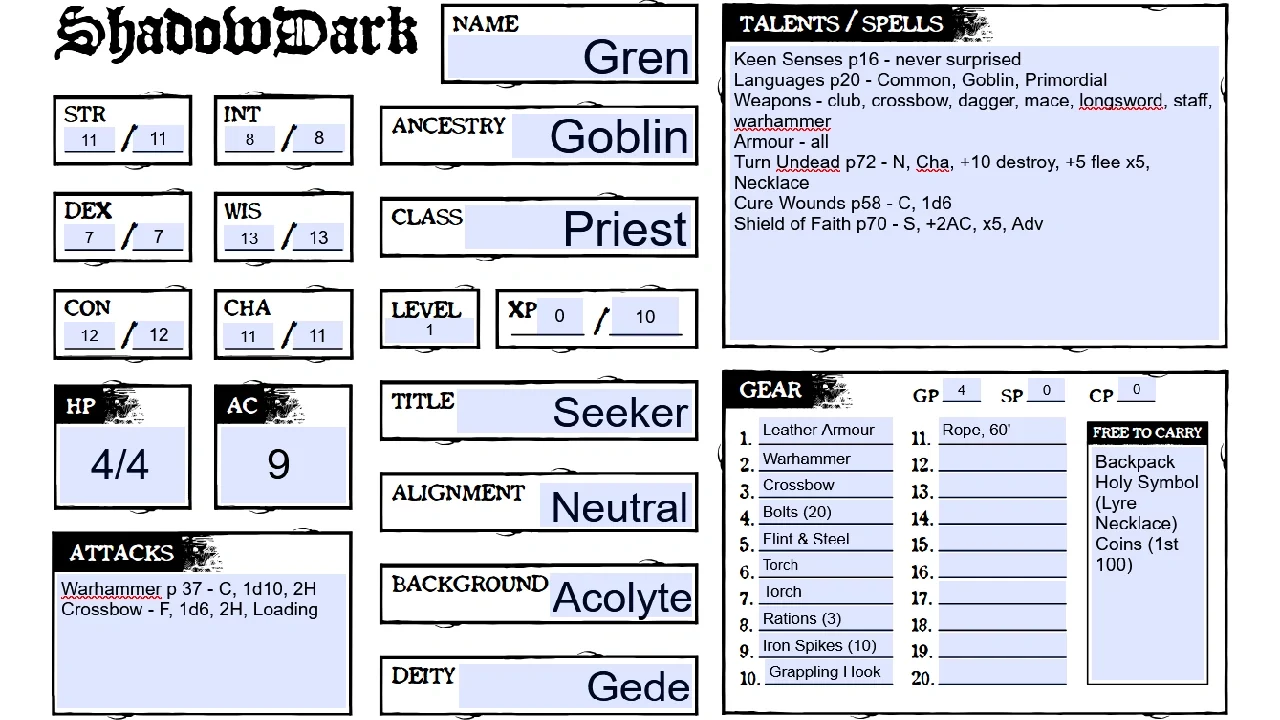
The character sheet is a big hint.
Kelsey has said one of the hardest design choices was getting rid of skills. It’s a brilliant move. Some systems’ sheets make players feel if they have no points in a skill, there’s no point trying; or worse, if they don’t have a certain feat, they cannot do a basic action. Does a character really need a feat to stand up quickly, or charge an enemy? Long skill lists don’t tell a player what their character is like. That fantasy is already in the player’s head. Long skill lists aren’t even that good at telling a player what their character is good at; their ability scores already cover that. In contrast, Shadowdark’s character sheet’s blank space encourages talking to the GM, and asking questions. It suggests to look for answers beyond the sheet, to get creative.
And players will need to for their survival. A side benefit of having such a simple sheet means character creation is incredibly fast. In a hobby where it can take over an hour to make a new character, my best time in Shadowdark is four minutes; though if I really pushed, I reckon I could get that closer to three. This is by hand; the online character generator’s random option can make it happen in a single click. This speed is essential because lucky level 4 wizards could have 16HP, unlucky ones 4. Death comes swiftly and often. Dice interpretation can be flexible, but there's no plot armour here.
Playing Shadowdark, The Series
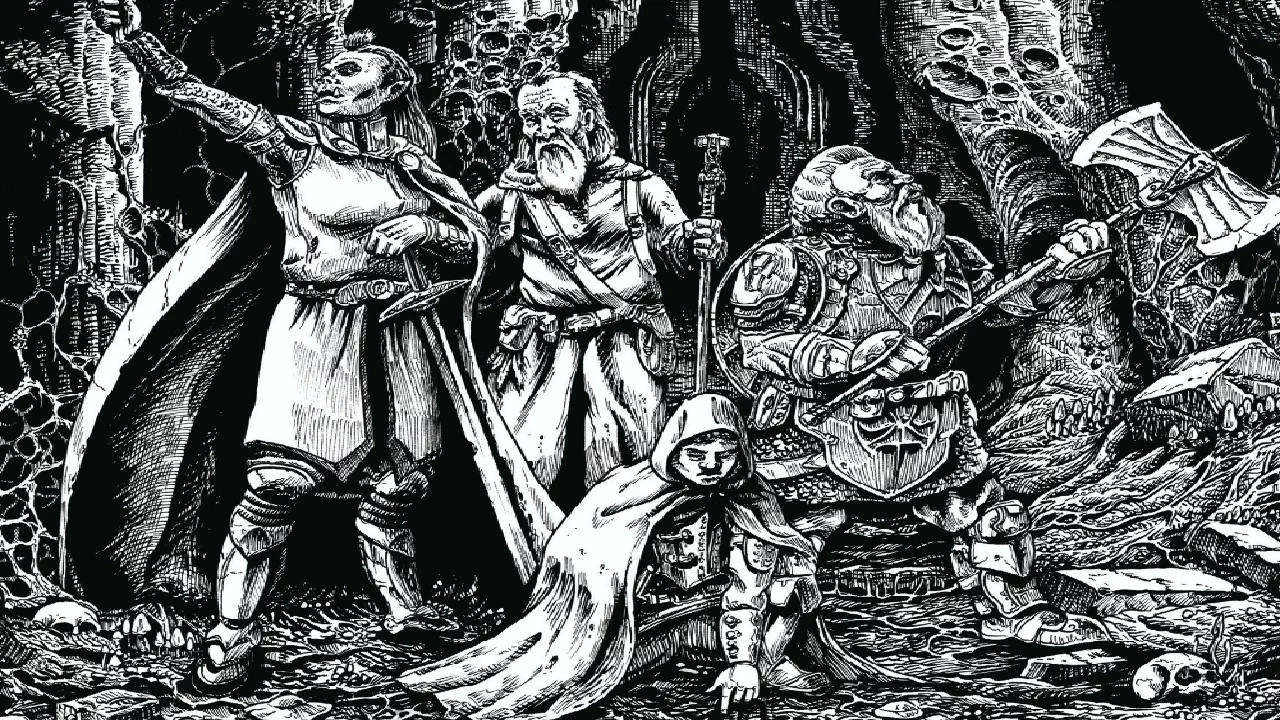
This is likely the first issue a group encounters trying Shadowdark. Some players really only want to want to play one character, focusing just on them and their journey of growth. This system is unlikely to be for them. And that’s fine; one of the amazing things about this hobby is the variety of experiences on offer. However, it’d be wrong to think Shadowdark cannot tell epic stories—epic in its literal sense of long, powerful narratives. Rather than a feature film focusing on just a few characters, Shadowdark is more like a TV series. The cast of characters may be very long; some are only around for a while; but all of their small, personal moments build a greater, combined narrative. Think Game of Thrones—before it went off the rails—than Lord of the Rings.
This has benefits for role-playing opportunities, gamer rewards, and real world positives.
More Characters, More Stories
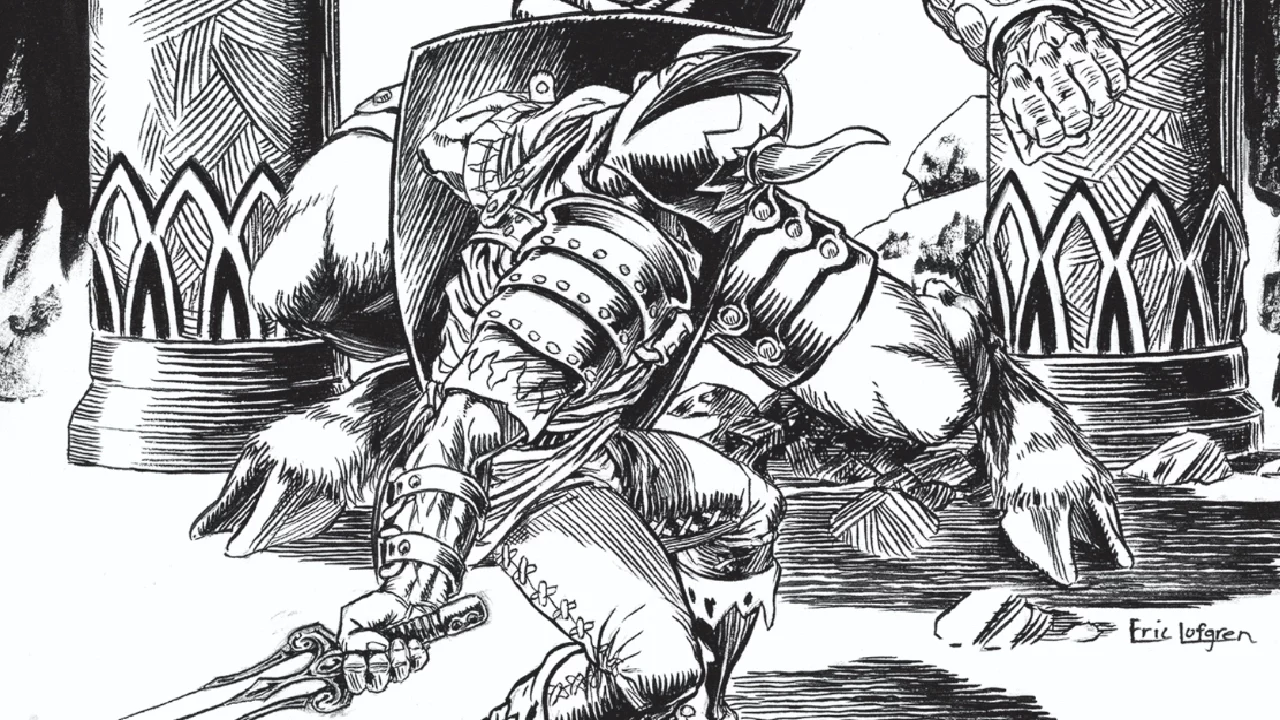
First, the faction or town the adventurers are working for becomes a character itself. Their story can become as important as the current party’s, giving a wonderful chance at communal worldbuilding. Also, character death can be painful, but it’s fantastic inspiration for role-playing. Game of Thrones wouldn’t be the amazing story it is without the tragedy of the Starks; the consequences from season one’s ending are still there in season six—where, as we all know, the series finished.
Playing Shadowdark with Gamers
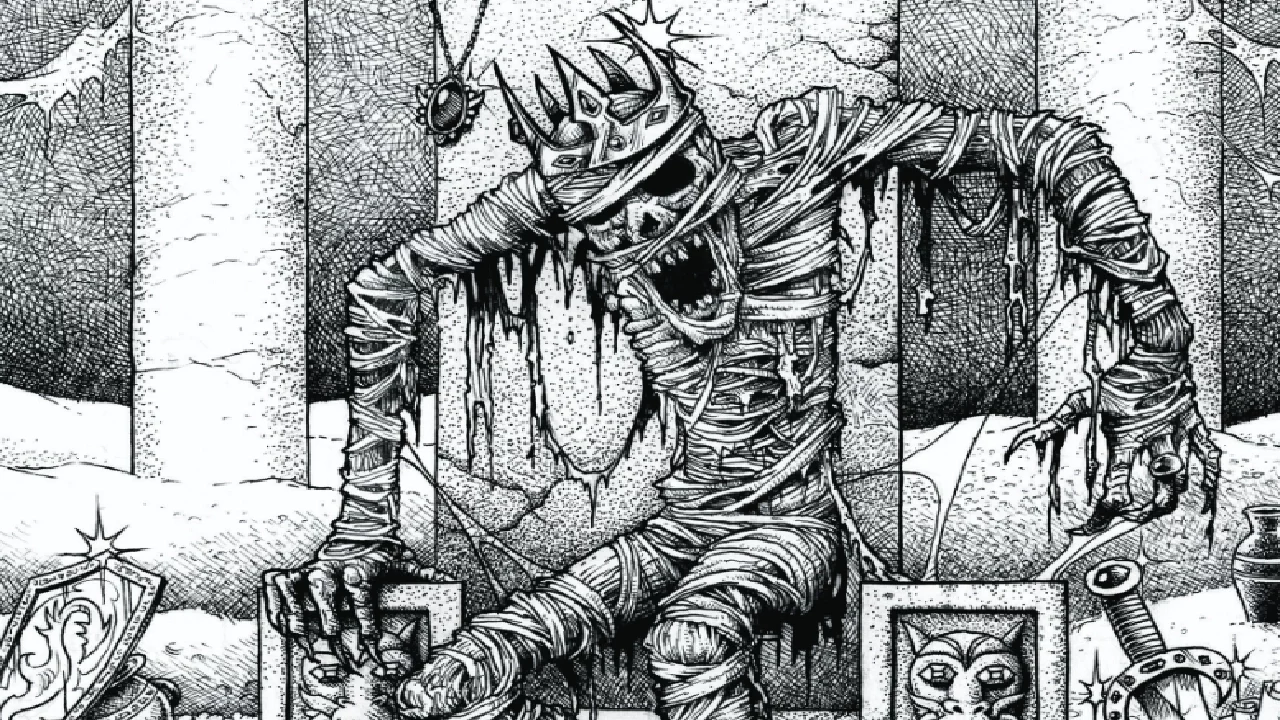
Second, the ongoing threat of death rewards players with gamer brains. Sid Meier said “a game is a series of interesting decisions.” His design philosophy suggested those decisions stay interesting while the player is on the verge of losing. Shadowdark’s low HP keeps its players on the verge; however, risks are everywhere. For instance, magic is unpredictable. Players roll every spell—there are no save DCs—and any fail loses that spell until the character can rest. Critical fails mean priests must complete a penance to their respective god—a wonderful role-playing opportunity—to get the spell back; wizards, on the other hand, can suffer all kinds of disaster from going mad to ripping a hole in reality.
Inventory plays a role, too. Nearly everything takes up an inventory slot—sometimes more than one. Many characters will only be able to carry a maximum of ten items. With weapons, armour, and precious torches taken away, there’s little space left. Players will often be choosing what to leave behind. Now add the extra pressure of bringing back gold—gold pays for carousing, and carousing gives XP; the more gold spent, the larger the possible rewards—often getting more role-playing opportunities in the process. Characters don’t just need to find gold; they need to get it back home.
There is also a system mastery thrill. Kelsey built in the feel of progression by making higher levels feel much stronger. From level 5, topping out at 10, characters get have access to abilities and spells with a noticeable increase in power. These characters still need to be careful; higher level monsters can be really nasty, and the dice can end anyone; however, those that survive the meat grinder of lower levels will feel well rewarded.
Playing Shadowdark Helps Groups Play More
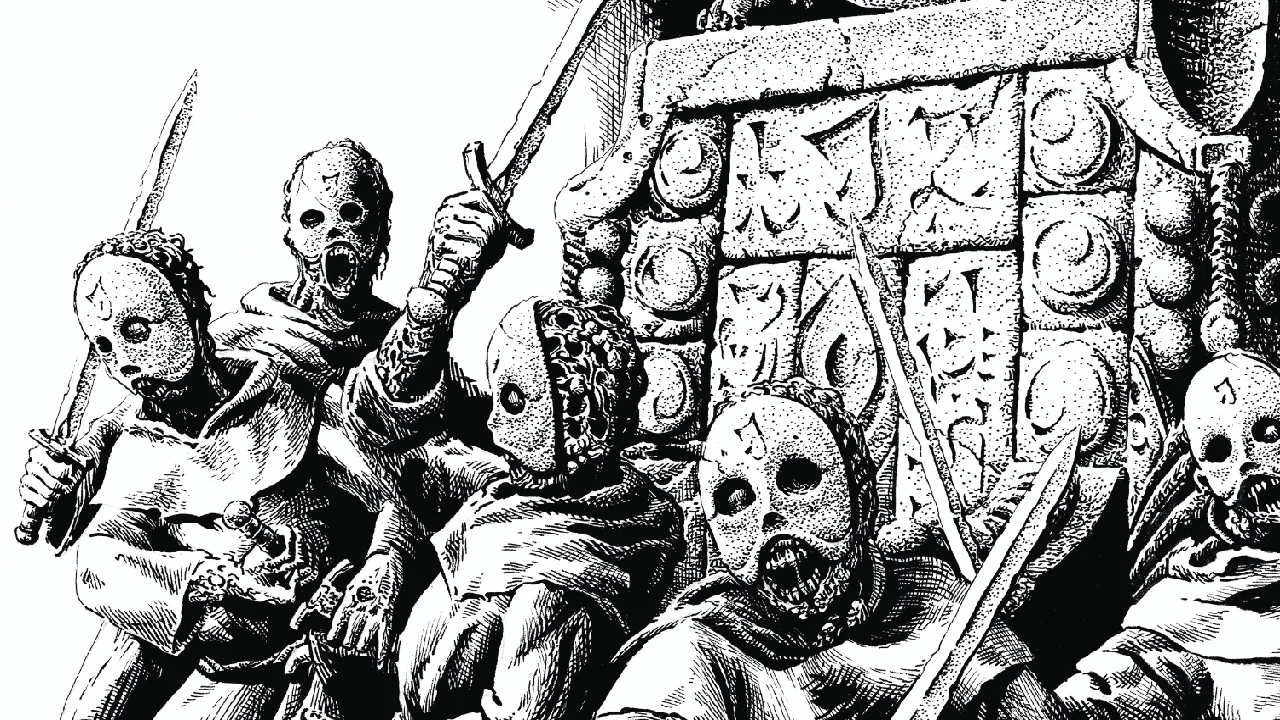
Lastly, thinking of Shadowdark like a TV series makes it a lot easier to schedule games. If the long-term focus is on the group’s faction, it matters a lot less if a couple of players cannot make a session. Anything making the final end boss—cue epic battle music—of scheduling a gaming session easier is a very fine thing.
That all said, low HP, risky magic, and limited inventory aren’t what make Shadowdark really special. These are in many games, especially in Old School Renaissance (OSR) and New School Revolution (NSR) systems. No, the first thing that really makes Shadowdark different is light.
The Shadowdark Is...Dark and Full of Terrors
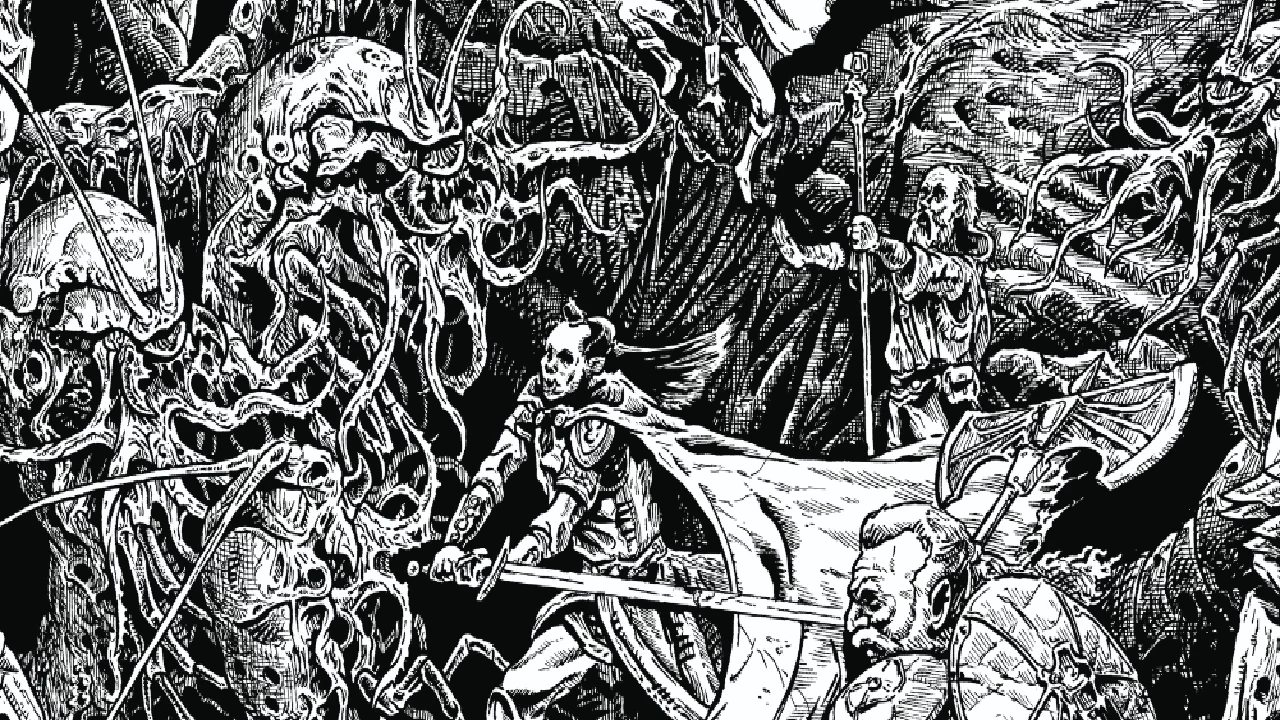
Kelsey has described stopping mid-meal with her family when the idea came to her. Light sources in Shadowdark run down in real time. Each source of light has about an hour of light to give. No light source in the Shadowdark turns the environment deadly—the GM starts rolling for encounters every round. No ancestry—human, elf, dwarf, or goblin—has darkvision. When the lights go out, everyone feels the fear.
I’ve played with real time countdowns before—notably Arc Doom Tabletop RPG by Momatoes and Ten Candles by Stephen Dewey; these are run as one shots, though. Shadowdark makes for great one shots too, but it’s equally able to go session after session. Mike Shea’s series tracking his year-long campaign, found here, is an excellent example of this.
Lights running out in real time is a fantastic helper with keeping a group stay focused; it naturally increases the tension while the party are delving. On top of that, a player’s concern mirrors their character’s as the lights run low. Kelsey encourages GMs to attack light sources. Both the environment and monsters can all make those lights run out faster. It’s a wonderful innovation.
Running Shadowdark Is a Dream
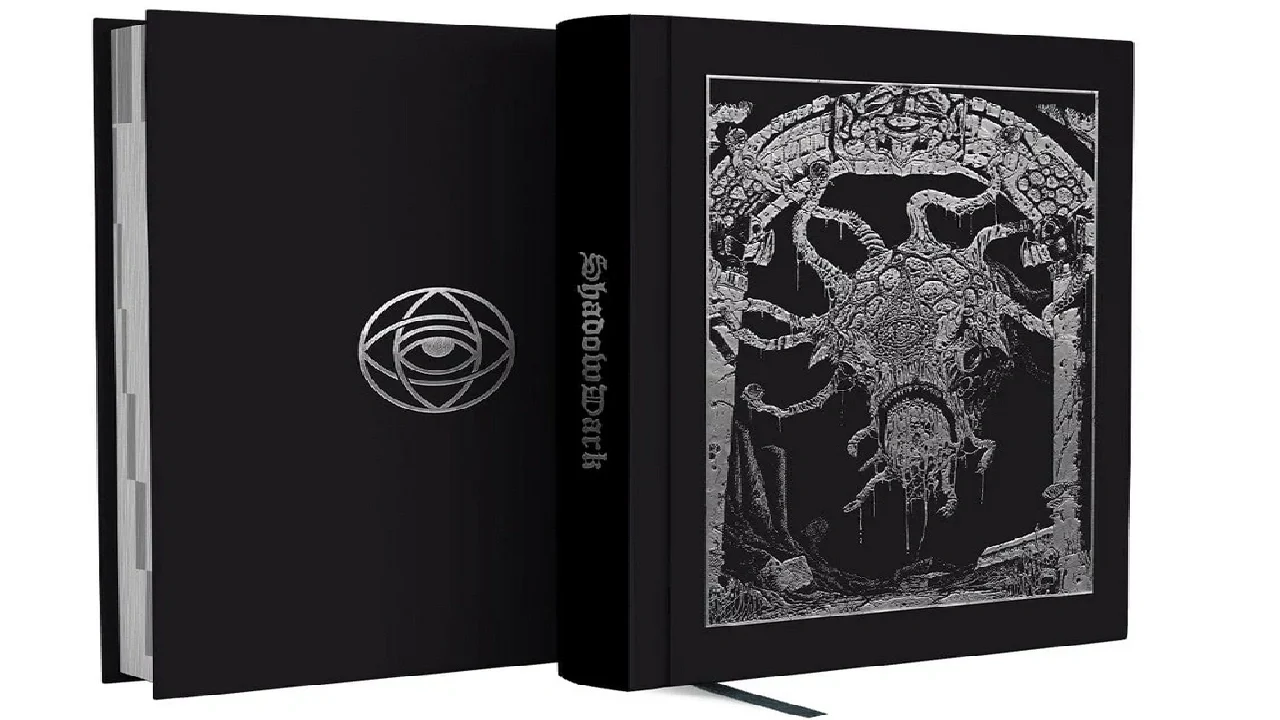
This is another reason why playing Shadowdark feels different. It’s so easy to GM. There is enough crunch in the system to give a framework for GMs to handle any dungeon crawling situation; it then trusts the group enough to get out of the way. I mentioned how the layout makes checking the rulebook as quick and painless as possible. As another example, Kelsey has somehow packed 240 monsters into 71 A5 pages (in the English version). There are even whole pages dedicated to particularly nasty monsters in that count. Most, though, are two lines of flavour text, stats in three, and then any ability that makes them different. That’s seven lines average. It’s a reference book with anything that would needlessly slow down a GM removed.
However, Kelsey doesn’t stop there. Shadowdark supports GMs by stating from the beginning it’s a game of rulings, not rules. The ruleset itself is comprehensive enough to prevent GMs feeling lost. At the same time, it’s minimal enough to avoid trapping GMs in unnecessary detail. This will give many GMs the confidence to run a game; it frees the group, letting them create the experience they’ll enjoy most.
The rulebook actively works to encourage GMs to make the game their own. On top of those 240 entries, Kelsey includes full rules on making new monsters and advice on how to run them. There are also optional homebrew examples of how core mechanics like light sources and XP could change for different experiences. The message is simple: anything can change; the most important thing—even more than any rule—is the fun at the table.
Playing Shadowdark? Welcome to a Lovely Community
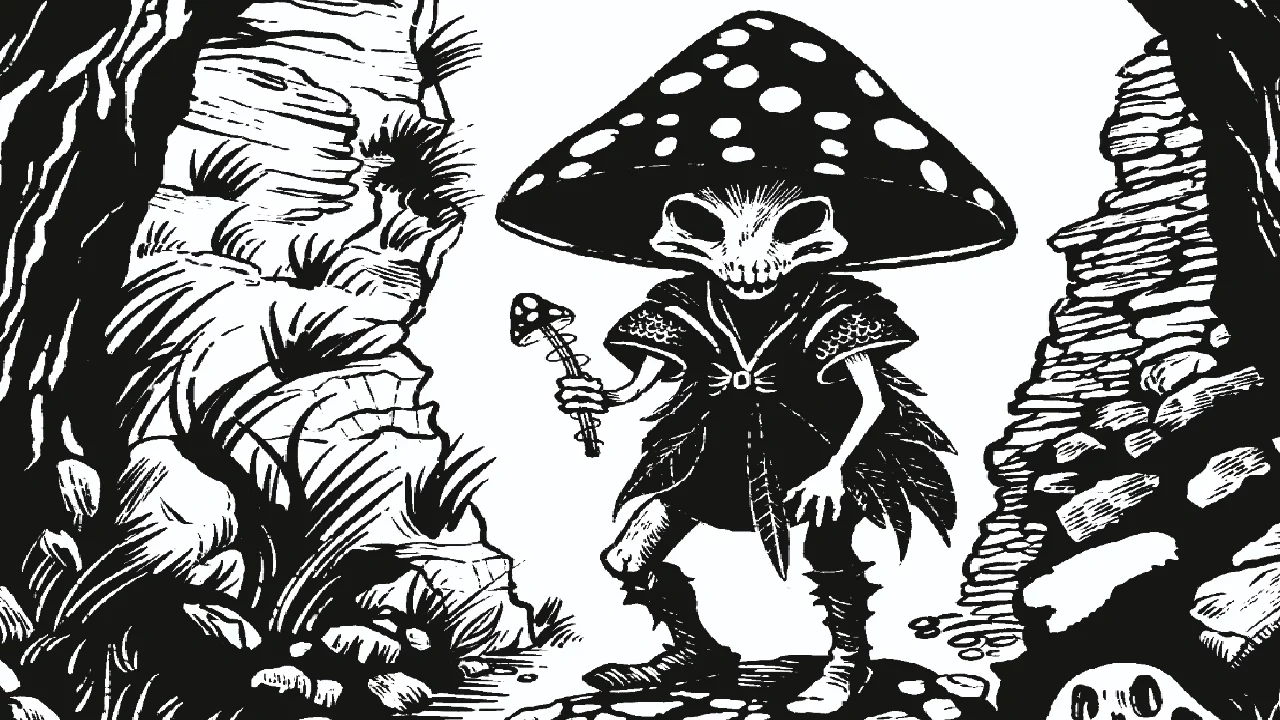
Shadowdark’s other great side is its very active—and very friendly—community. Back in 2023, Kelsey’s Kickstarter for the rulebook reached $1,365,923. However, the 2025 March campaign for The Western Reaches setting made an incredible $2,503,093. Considering rulebooks always outperform other Kickstarter types in this hobby, that number for a world setting book is truly remarkable. The enthusiasm and support for The Western Reaches setting shows just how big the system has gotten; it also suggests Shadowdark is only going to grow.
Shadowdark is already attracting big name, multi-award-winning third-party designers like Sersa Victory. The system has an extremely creator-friendly license; GMs looking for fresh material can check DriveThruRPG, Itch.io, as well as Shadowdark’s own Reddit and Discord; there are a lots of adventures, classes, alternative rulesets, and homebrew settings ready and waiting, both paid and freely available.
Kelsey herself releases a free monster every month for people subscribed to her newsletter. On the main website, there are more resources and adventures, including a free Solodark conversion for single players. For groups looking to check out the system for the first time, a free quickstart set is here.
A group only needs the rulebook to run a complete game, but the optional support for this system is huge. And a quick shoutout for the Discord community; it’s incredibly friendly and welcoming, a great place to find resources, share experiences, and get questions quickly answered.
Who Should Be Playing Shadowdark?
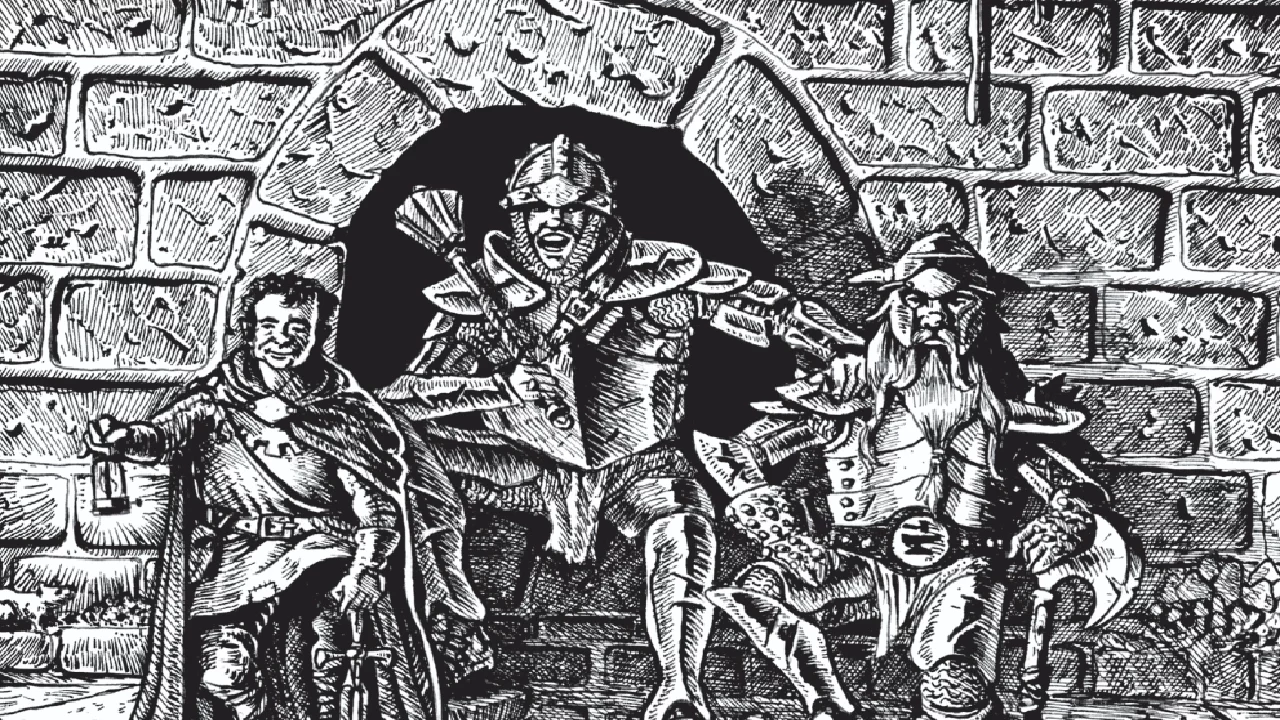
I’d recommend anyone to try Shadowdark. However, it won’t suit every group. It isn’t the best match for players who want to play one hero, without pause, for months and months. Deep system mastery lovers will also have to endure lower levels. Shadowdark doesn’t use any extra bonuses like proficiency to reduce the swinginess of the d20; this can make any dice roll, especially in combat, feel brutal. The smartest play can still fail because of the dice. If these aren’t deal-breakers, then Shadowdark is definitely worth a go.
As an aside, regardless of normal preferences, I think every group should try a gauntlet adventure; even if it’s just a one-shot. These are adventures for 0 level characters. Players get four each, and many will die; I guarantee the experience will have everyone laughing at the table. Jordon Rudd’s Trial of the Slime Lord, found here, is a brilliant example. It’s also free on Foundry VTT!
An Exciting Future

It honestly feels safe to say Shadowdark is helping to innovate and evolve the tabletop role-playing hobby. It offers experiences that are harder to find in other systems; it’s so easy to play and run; and, it has top level support. Shadowdark isn’t for everyone, but then nothing is. It is, however, certainly worth a try. And for the foreseeable future, it is only going to grow and grow. I think that’s brilliant.

